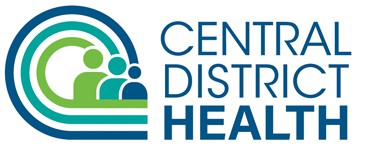Death cap mushrooms (Amanita phalloides) were recently identified for the first time in Idaho. The mushroom was found in Boise but may be present and undetected in other areas. The mushroom may be confused with edible mushrooms (see https://www.zoology.ubc.ca/~biodiv/mushroom/A_phalloides.html). Consider amatoxin poisoning from death cap mushrooms in differential diagnosis of illness after ingestion of wild mushrooms in Idaho.
Amatoxin poisoning is typically a triphasic illness, with onset of a gastroenteritis phase 6 to 24 hours after ingestion, followed by a period of apparent recovery 24 to 36 hours after ingestion, and a hepatorenal phase 48 to 96 hours after ingestion. Severely poisoned patients may progress to irreversible fulminant liver failure, often with acute renal failure and pancreatitis. Patients evaluated during the gastroenteritis phase might be discharged without appropriate treatment if amatoxin poisoning is not suspected.
Consultation with the regional poison center, 1-800-222-1222, is strongly encouraged whenever amatoxin-containing mushroom poisoning is suspected. The regional poison center can work with local mushroom advisors to help identify the mushroom involved; however, treatment should not wait for results of mushroom identification or amatoxin detection.
Mortality can be reduced with intensive fluid therapy for hypovolemic shock caused by severe vomiting and diarrhea, correction of electrolyte disturbances, supplemental elimination enhancement with multiple doses of activated charcoal, and supportive care for liver toxicity. The use of other methods of elimination enhancement should be decided in consultation with a medical toxicologist and a transplant team for patients with or progressing to acute liver failure.
Amatoxin uptake inhibitors have been used experimentally. Intravenous silibinin (Legalon® SIL) may be obtained for eligible patients by application for an Emergency Investigational New Drug to the US Food and Drug Administration (FDA) Expanded Access Program (call FDA Center for Drug Evaluation and Research at 301-796-3400 during business hours or the FDA Emergency Call Center at 866-300-4374 after hours and generate a shipping label by sending an email to Emergency_Legalon@marken.com or calling customer service at 484-754-7500). If intravenous silibinin is not available, continuous intravenous infusion of high-dose penicillin G has been recommended.
Death cap mushrooms were detected in Boise, Idaho; however, it is possible they could be found in association with imported horticultural trees in other urban areas. In other regions, death cap mushrooms appear in late summer through December, or year- round. Seasonal risk in Idaho is unknown.
Resources:
Peredy TR. Amatoxin-containing mushroom poisoning (eg, Amanita phalloides): Clinical manifestations, diagnosis, and treatment. In: Fleisher GR, Walls RM, Ganetsky M, Burns MM, Traub SJ, eds. UpToDate, UpToDate;2022. Last updated April 1, 2021. Accessed March 10, 2022. https://www.uptodate.com/contents/amatoxin-containing- mushroom-poisoning-eg-amanita-phalloides clinical-manifestations-diagnosis-and- treatment?source=history_widget#H2843563
Horowitz BZ, Moss MJ. Amatoxin Mushroom Toxicity. [Updated 2021 Aug 11]. In: StatPearls [Internet]. Treasure Island (FL): StatPearls Publishing; 2022 Jan-. Available from: https://www.ncbi.nlm.nih.gov/books/NBK431052/
Lee DS, et al. Amatoxin Toxicity. Medscape https://emedicine.medscape.com/article/1008902-overview Updated August 19, 2021. Accessed March 10, 2022.
Amanita phalloides Mushroom Poisonings — Northern California, December 2016. Vo KT et al. MMWR Morb Mortal Wkly Rep 2017;66:549-553. http://dx.doi.org/10.15585/mmwr.mm6621a1
Marquardt K. Chapter 109. Mushrooms, Amatoxin-Type. In: Olson KR. eds. Poisoning & Drug Overdose, 6e. McGraw Hill; 2012. Accessed March 10, 2022. https://accessmedicine.mhmedical.com/content.aspx?bookid=391§ionid=42069923
Food and Drug Administration (FDA). Bad Bug Book. Handbook of Foodborne Pathogenic Microorganisms and Natural Toxins. 2 nd ed. 2012. Available from https://www.fda.gov/media/83271/download
#####

